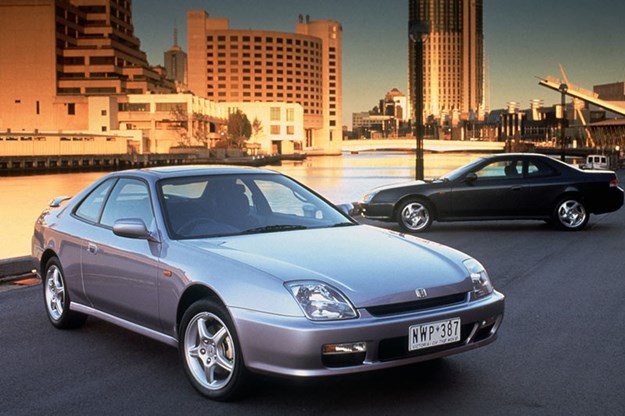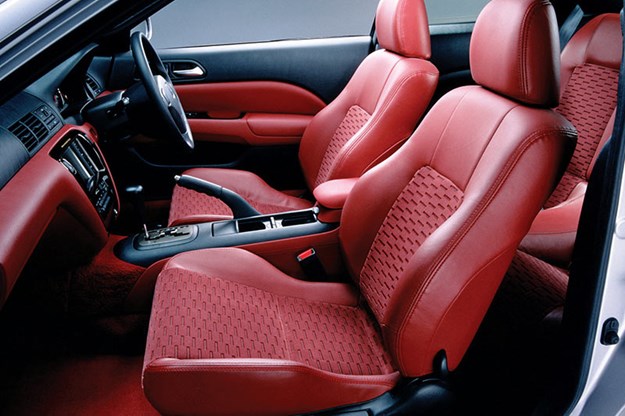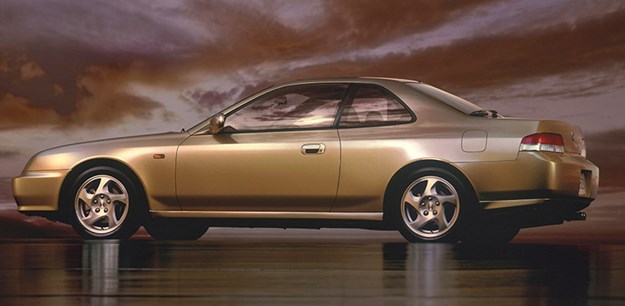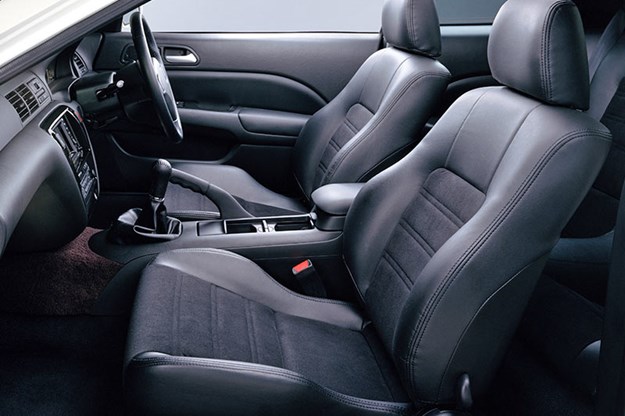1992-2001 Honda Prelude Gen 4 + 5 - Buyer's Guide



|
Honda's trademark technical complexity can be a two-edged sword - mechanical sophistication vs maintenance-cost fears
In the space of 25 years Honda’s Prelude changed from an attractive but underpowered city car into a sophisticated piece of performance machinery. At the heart of Honda’s best and final Prelude design was a punchy 2.2-litre with double overhead cams and variable valve timing (VVT). Add that to a shape that survived for close on a decade with one restyle and you might expect 4th and 5th Generation Preludes to be in strong demand. However they have been disappearing with surviving cars remaining cheap.
Fear of mechanical issues as the complex Honda engines age is a major factor in buyer reluctance and declining numbers in the market. Admittedly the engines need dedicated maintenance and owning a VTi-R isn’t a task for the apathetic, but everyone stepping away is contributing to this significant model from the late 20th Century disappearing entirely.

Two versions of the Prelude were initially offered, with the VTi-R being added from 1994. The basic Prelude S came with dual air-bags and climate-control air-conditioning with the Si adding four-wheel steering and an extra 20kW of power. Front wheel drive in the years before traction control, the steering wheel of a VTi-R with 143kW certainly became animated once the tachometer topped 5000rpm. It wasn’t the same wrist-snapping torque steer you could feel in a Telstar or Cordia turbo but you certainly knew that something significant had happened under the bonnet.
| 2019 Market Review: Honda Integra/Prelude/Accord
The VTi-R’s equipment and mechanical advances sent the price of a Prelude towards $50,000. As compensation a power sunroof, ABS braking, uprated sound system and that rollicking VVT engine were added. The VTi-R was initially available as a five-speed manual but in 1997 when the Gen. 5 version arrived, a four-speed auto became available.

In common with most imports of the era, Honda interior plastics are susceptible to sun damage and can look very shabby if neglected. However, a few of the surviving cars have led privileged lives, averaged only 5000-8000km a year since new and spent a lot of their time in garages away from harmful rays. Cars with patchy paint and clear-coat that is starting to lift need a wide berth because the cost of a full respray will pretty much double the cost of an otherwise good car with original paint.
Hunting down a good Prelude may take time and deliver more than a few disappointments. Most people will want a VTi-R but the 118kW Si will still deliver decent performance.

VALUE RANGE prelude (VTi-R auto)
FAIR: $1500
GOOD: $3800
EXCELLENT: $6000
(Note: exceptional cars will demand more)

BUYER'S CHECKLIST
BODY & CHASSIS
With many good cars in the market for very little money, Preludes with patchy paint and poor crash repairs are not worth having. Look at the bumpers for misalignment and broken clips and around the sunroof aperture for paint damage and rust. Poorly-repaired crash damage is the biggest hazard, with kinked chassis rails and damaged strut mounts manifesting via chronic suspension problems. Look at door shut-faces where mismatched or peeling paint will reveal a resprayed car. The brand-new replacement headlights cost $650-800 per pair with reasonable-looking used ones at $300.

ENGINE & TRANSMISSION
The Prelude and other VTi-engined Hondas suffered virtually from new from oil sludging that could wreck the valve train. Stop-start running was a major problem and even cars serviced in accordance with the manufacturer’s recommended intervals suffered. Ticking and clatter from the top of the engine when starting from cold are warning signs. Age can also affect underbonnet rubber components but shop carefully when buying aftermarket hoses as prices on the same items from different suppliers vary alarmingly. The five-speed and automatic transmissions are tough but rebuilds (thanks to those fabled Honda parts prices) are expensive. Looking for a second-hand transmission might save money on a car you don’t intend keeping forever.
SUSPENSION & BRAKES
Worn suspension is going to spoil the balance of the good-handling Honda. If it suffers a lot from bounce or body-roll then uprated inserts, stiffer springs and more resilient bushings will control the body without totally ruining the ride quality. Quality coil-over shock absorbers (parts only) cost around $1000 per set of four. Low-priced cars might be running low-cost, low quality tyres to get through a roadworthy inspection and that won’t help the handling either. Power steering should be precise and responsive and 40mm of slack at the top of the wheel suggests problems with the rack or some suspension components. Brake rotor and caliper upgrades are available, with quality slotted rotors at $400-500 per pair.

INTERIOR & ELECTRICS
Interior plastics suffer sun damage so check under dash-mats for cracks and deteriorating door hardware, a loose or damaged console and sloppy column stalks. Make sure that the cruise control is working and power windows move freely. Look around the headlining for signs that seals around the sunroof (where fitted) may be leaking. Badly worn seat trim is a sign that the rest of the car may be in a similar state. If the seats really are the only problem, good used replacements have been seen for $500 a pair.
1992-2001 Honda Prelude Gen 4&5 specs
NUMBER BUILT: 156,735
BODY: all steel, integrated body/chassis two-door coupe
ENGINE: 2159cc in-line four cylinder with double overhead camshafts and fuel injection
POWER & TORQUE: 143kW @ 7000rpm, 212Nm @ 5250rpm (VTi-R)
PERFORMANCE: 0-100km/h 7.7 seconds, 0-400 metres 15.8 seconds (VTi-R manual)
TRANSMISSION: five-speed manual, four-speed automatic
SUSPENSION: Independent with A-arms, coil springs, struts and anti-roll bar (f) independent with A-arms, coil springs, telescopic shock absorbers and
anti-roll bar (r)
BRAKES: disc (f) disc (r) power assisted ABS on some
TYRES: 205/50R16 radial
| Read next: Understanding our value guides
Unique Cars magazine Value Guides
Sell your car for free right here
Get your monthly fix of news, reviews and stories on the greatest cars and minds in the automotive world.
Subscribe

.jpg)







